All about nivaki
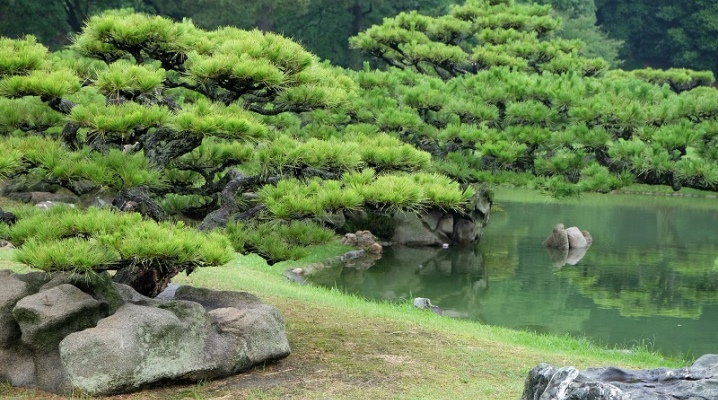
When arranging a private site or public area, landscape designers use a wide variety of techniques and techniques. Vegetation stands look most impressive on the site (especially if it is characterized by a sufficient area).
If you want to make your site unique and unlike others, then you can use the unique nivaki technique. Today in our material we will talk about what the nivaki technique is, and what styles exist, and also consider what plants can be used and how to properly care for them.
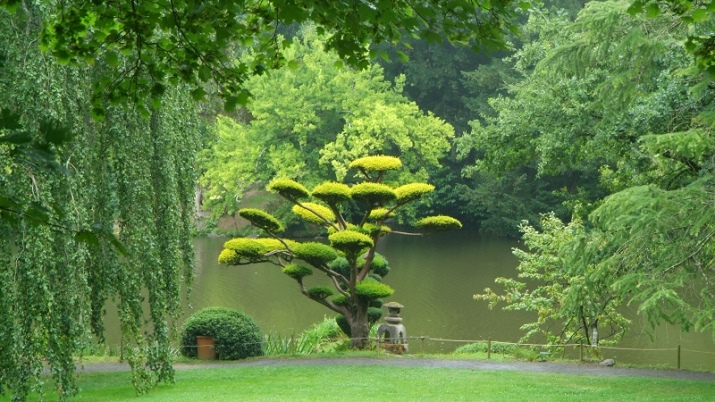
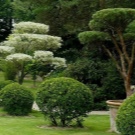
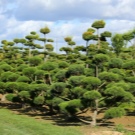



What it is?
Nivaki is a special group of trees that is actively used for arranging a Japanese-style garden. Besides, the same name denotes the art of "trimming" the crown and shaping the appearance of the tree in accordance with clearly defined aesthetic standards. With the help of plants such as nivaki, you can create a unique structure of the garden.
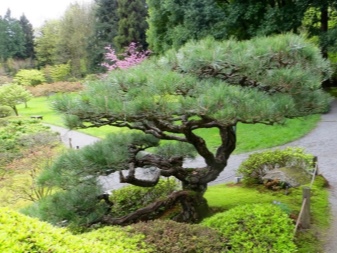
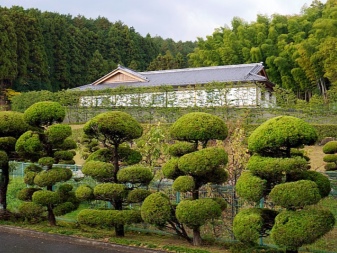
Styles description
Today there are a large number of types and styles of niwaki, which differ in key characteristics. Let's consider a detailed description of each of the niwaki styles.
Tecan
When processing plants within the framework of this style direction, the natural shape of the tree practically does not change. Only unnecessary branches are eliminated, and those branches that remain on the tree are located in a horizontal position. In this case, it is also necessary to form huge paw-caps at the ends of the branches.
The growth of trees is not limited, it can reach large-scale sizes. As such, the Tekan style is only available for outdoor use.
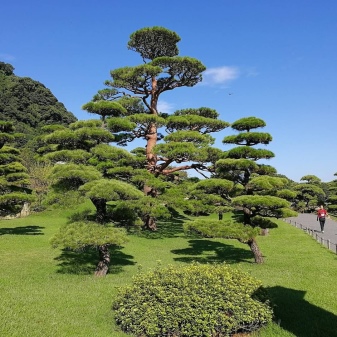
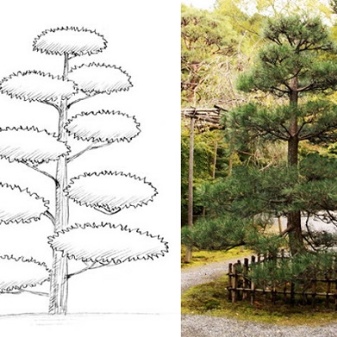
Kyoto form
The Kyoto form of nivaki is quite often found in the natural environment - most often in places where deforestation was previously carried out. After cutting down on the stumps of once existing trees, new young shoots often grow, which at the same time have a rather non-standard (one might say - a unique) form. The Kyoto form is also often acquired by those plants that have a damaged or frozen top.
Within the framework of the Kyoto stylistic direction, the formation of several types of fluffy hats is possible: they can be both horizontal and vertical. If you are shaping the tree for this style, then it is important to try to keep it natural.
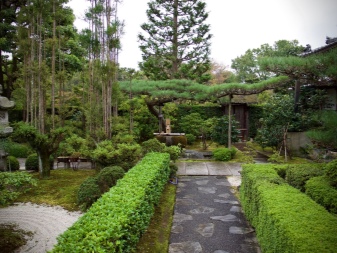
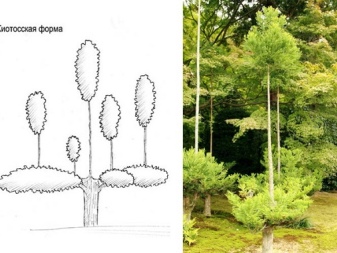
Kotobuki
Kotobuki is a style that has not only aesthetic, but also a philosophical meaning. Next to the tree, which is formed within the framework of the kotobuki, a small-sized small Japanese Oki-gata flashlight is installed without fail. Thus, the kotobuki tree and the Oki-gata flashlight form the amulet of the entire garden. As for the shape of the tree, it should look like a hieroglyph for happiness.
In this regard, it should be said that the process of forming a suitable plant shape is rather complicated. If you are not ready to devote enough time to forming a kotobuki tree, and want to purchase such a plant, then you need to be prepared for the fact that you will spend a fairly large amount of money.
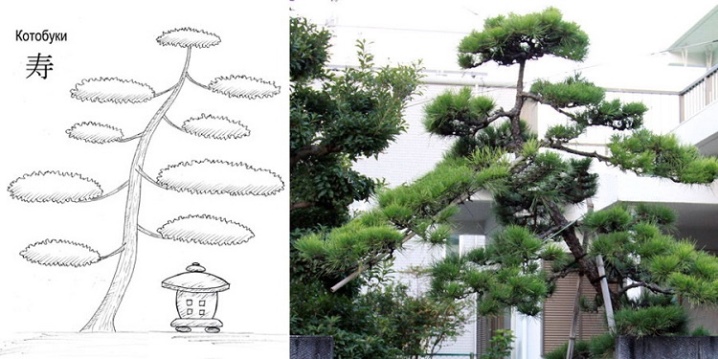
Moegi
The basis of the moega style within the niwaki art is the barrel. Its formation should correspond to a certain amplitude and be located in a single plane. As in the case of the kotobuki, the style of myega requires painstaking, lengthy and very attentive work.
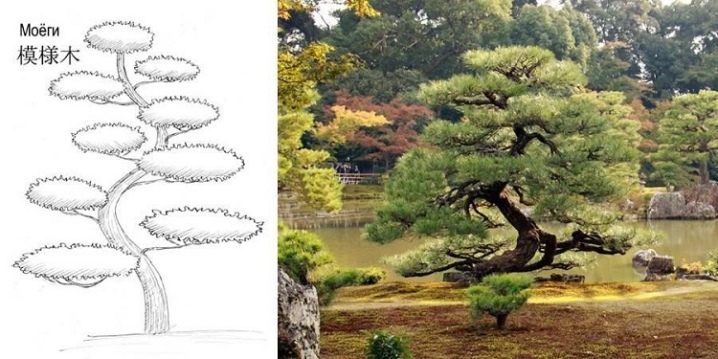
Kongay
The formation of kongai trees is relevant in a non-standard landscape pattern: for example, in those places where there are slopes or cliffs. The main distinguishing characteristic of plants that are formed in this style should be the fact that the roots of the tree are necessarily located above the drooping branches. In this regard, the tree itself must have a fairly high rate of flexibility.
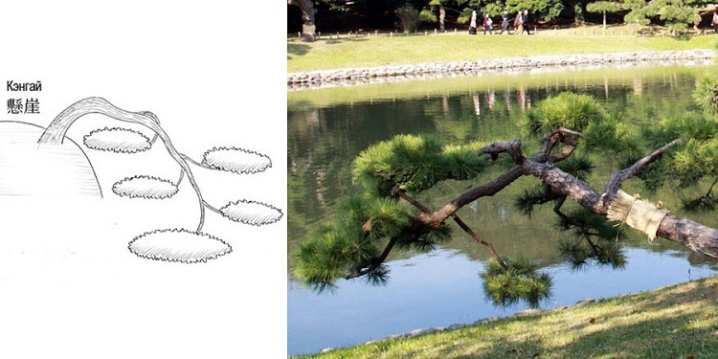
Shakan
This style is one of the most popular and widespread. The shape of the trunk remains straight, but must be fixed at an angle to the ground. In the process of shakan plant formation, it is imperative to take into account the direction and strength of the wind - thus, there is the possibility of creating the impression that the tree was formed not due to human efforts, but under the influence of natural conditions.
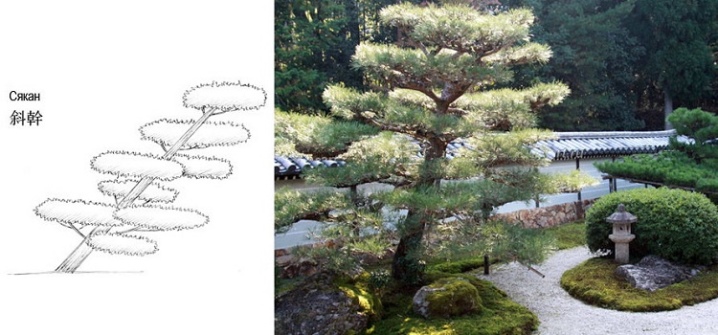
What plants are used?
The formation of a nivaki-style garden is possible using several types of plants (both deciduous trees and conifers), among them:
- common spruce;
- thuja "Smaragd";
- larch;
- maple;
- oak;
- Cossack and rocky juniper;
- willow;
- Apple tree;
- Birch;
- lilac;
- Rowan;
- cedar, etc.
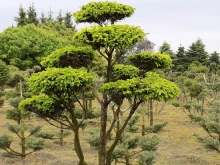


Let's take a closer look at how you can make a nivaki tree from various plant varieties.
- Pine in the nivaki style looks as impressive and attractive as possible. Before starting the process of cutting and forming a plant, it is important to carefully study the young seedling in order to understand which of the above styles will be most relevant. It is also important to consider your own wishes and preferences.
After you have decided on all the key characteristics, it is very important to make a preliminary schematic sketch (preferably in high resolution).
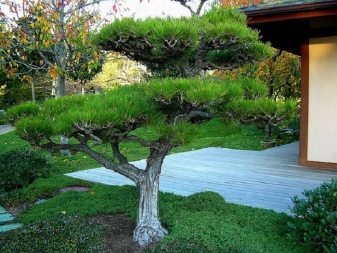
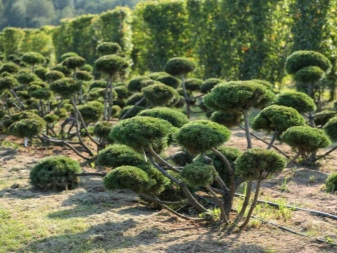
- Spruce. The main procedure that is required to form a nivaki-type spruce is a haircut. The most popular shapes are conical and spherical.

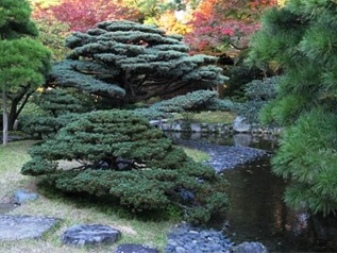
- Juniper Is one of the best and most suitable plants and is very often planted in Japanese gardens. Young shoots of the plant are cut with garden shears or pruning shears. You can give absolutely any shape to a juniper - in this regard, be guided by your taste preferences.
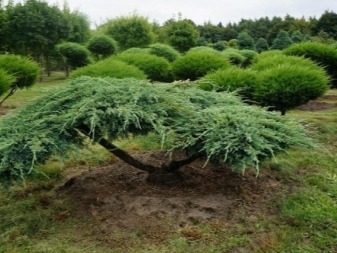
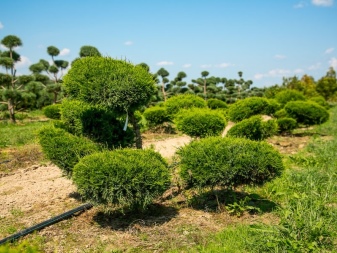
- Thuja very often it undergoes modification in the nivaki style, since it is a picky plant and tolerates a haircut well.
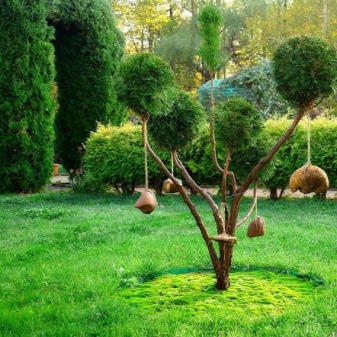
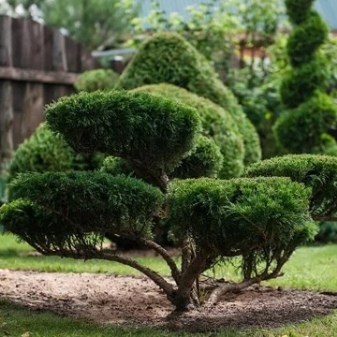
- The process of forming niwaki from yew carried out according to the same rules, regulations and principles as for thuja.
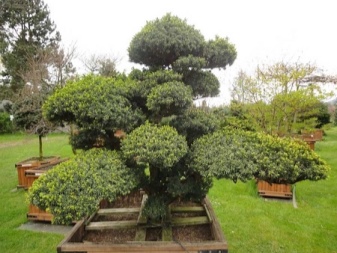
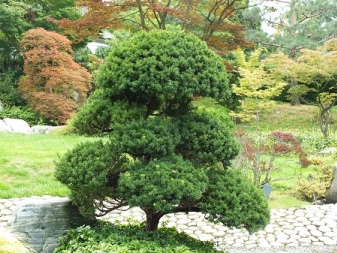
- In the process of caring for a fir the tree can be pinched by hand or cut (the latter option is necessary to intensify the density of the crown).

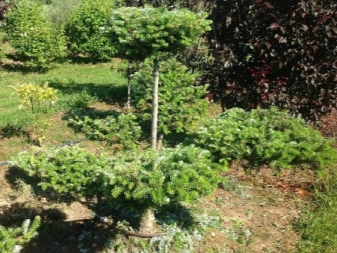
- Cypress can be formed in different ways: in the form of balls located on branches, or in the form of a plant located above the ground in a horizontal position.

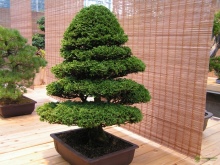
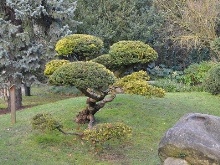
Terms of formation
If you want to become the owner of a unique Japanese niwaki garden, then you can choose one of 2 existing options: purchase ready-made trees or form plants yourself with your own hands at home. The second option will be much cheaper, but it will take you a lot of time. The specific terms will depend on the style direction you have chosen.
If it is necessary to form a non-standard shape of the tree trunk, it is very important to start the modification process at a time when the plant is still young and just beginning its development process. If the trunk does not need to be changed, then you can start forming the nivaki tree at the moment when the plant has reached the age of 5-7 years. The indicated times can vary significantly depending on the specific type of wood. So, for example, the formation of a thuja can take from 2 to 4 years.
Also, attention should be paid to how healthy the tree is.If the plant is painful, then you should not waste time forming nivaki from it, as your efforts may not be crowned with success.

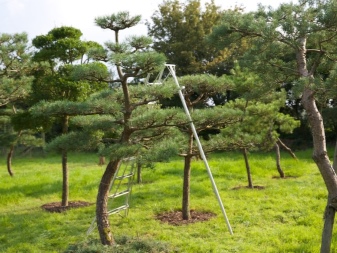
Pruning tips
In the process of forming a Japanese nivaki garden, it is very important to undergo training and become familiar with the technique and existing methods of pruning. Consider a few expert tips.
- It is recommended to use garden shears or pruning shears as the main toolkit. In some cases, it is appropriate to use special devices, which in their appearance are similar to frames that direct the growth of the trunk and crown in the right direction. Such devices are made from wire, bamboo rods, twine and burlap.
- Pruning should be not only aesthetic but also sanitary. Sanitary pruning should be done on weak or damaged cuttings.
- Adjustments to the shape of the tree should be regular. At the same time, it is imperative to carry out disinfection procedures when pruning branches. To do this, you can use mixtures and substances such as garden var, charcoal or brilliant green.
- It is not recommended to trim plants in rainy weather.
By following these expert tips, you will be able to achieve the desired result and shape the tree in a style that suits you.


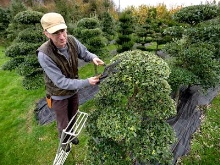
Care rules
In order to achieve the desired result, you must follow all the rules and regulations. Let's consider the main ones.
- Plants need to be fed without fail. For example, foliar feeding will be relevant for conifers (for example, "Zircon", "Epin Extra"). In addition, chemical compounds such as insecticides and fungicides should be used in the process of caring for the tree. It is also recommended to use chelated fertilizers (for example, YaraVita, Lignohumate, NTP-Sintez, etc.).



- Another important point of care is the treatment of trees from pests and diseases. For these purposes, drugs such as "Confidor", "Skor", "Omite", etc. are used.
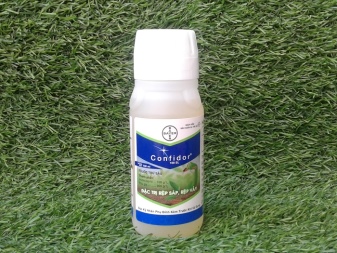

Important. You should immediately take into account the fact that the nivaki tree is the result of long and painstaking work. Accordingly, you need to be prepared in advance for this.
In general, we can conclude that the Japanese niwaki garden is a unique element of landscape design, which will decorate both a private site and a public area. In this case, it is necessary to decide in advance on the style in which you will form trees, choose suitable varieties and start forming. It should be remembered that you will have to spend a lot of time and effort before you get a beautiful garden. At the same time, the final result will not leave indifferent neither you, nor your household, nor guests, nor passers-by.
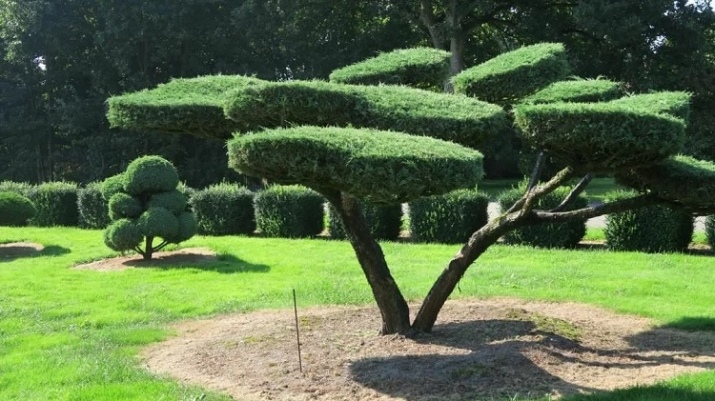
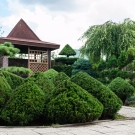
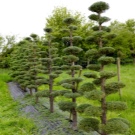

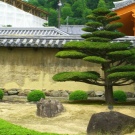
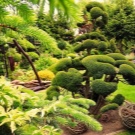
In the next video, a Greener expert will tell you about the creation of a niwaki bonsai.



































































The comment was sent successfully.